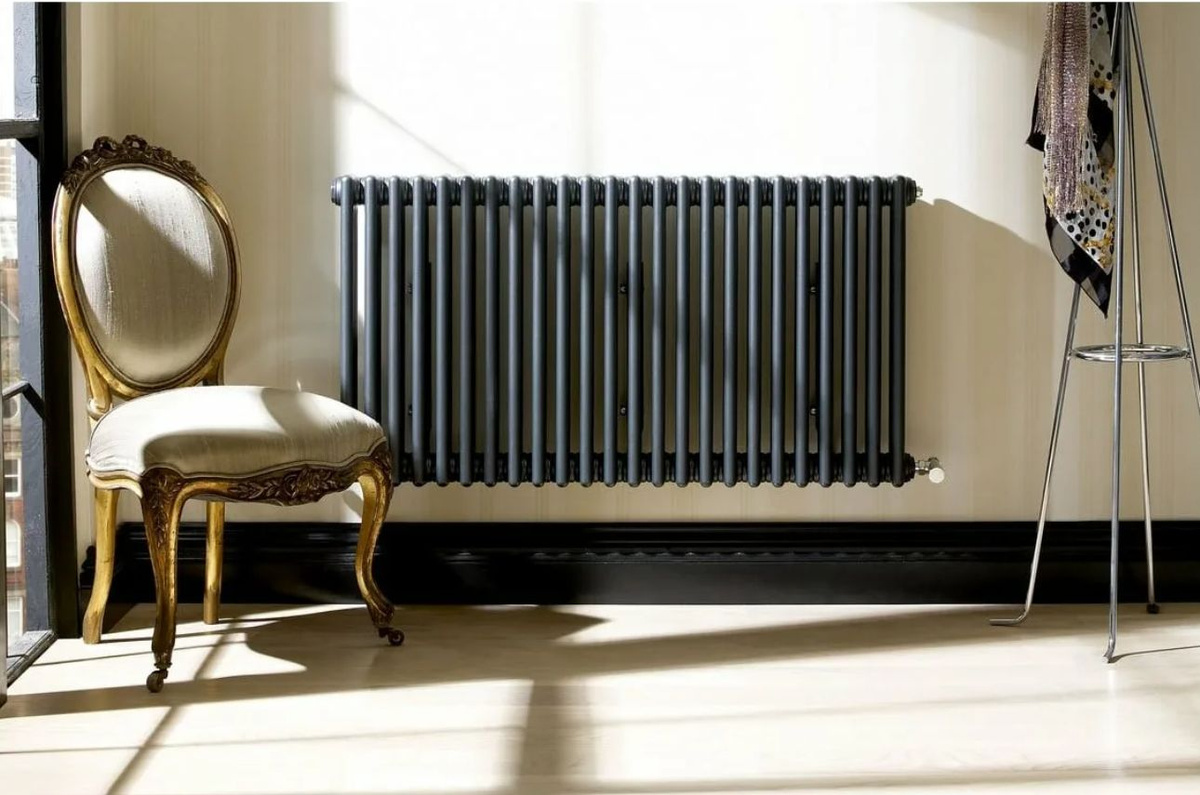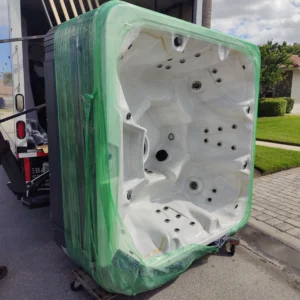 For the better part of a century, our homes have been built and designed around a fundamental conflict. We have a structure, the “bones” of the building. We have an aesthetic, the “skin” we live in and see. And then, caught awkwardly between them, we have the “services”—the wiring, the plumbing, and the heating. These services are the building’s circulatory and nervous systems, absolutely vital to its life, but they have been treated as a technical problem, an unsightly necessity to be concealed at all costs. The radiator, in particular, has been the prime offender, a domestic appliance that we have allowed into our living rooms by default, treating it with the same design reverence as a washing machine. We have hidden it, painted it to match the wall, and blocked it with furniture, all in a desperate attempt to pretend it isn’t there.
For the better part of a century, our homes have been built and designed around a fundamental conflict. We have a structure, the “bones” of the building. We have an aesthetic, the “skin” we live in and see. And then, caught awkwardly between them, we have the “services”—the wiring, the plumbing, and the heating. These services are the building’s circulatory and nervous systems, absolutely vital to its life, but they have been treated as a technical problem, an unsightly necessity to be concealed at all costs. The radiator, in particular, has been the prime offender, a domestic appliance that we have allowed into our living rooms by default, treating it with the same design reverence as a washing machine. We have hidden it, painted it to match the wall, and blocked it with furniture, all in a desperate attempt to pretend it isn’t there.
This act of concealment, however, created a deep “service void” in our design language. We designed around our comfort, not with it. But a profound shift in thinking is now complete. The most forward-thinking architects and designers are no longer treating services as a problem to be hidden. Instead, they are elevating them to the level of architecture itself. The pipes, the vents, and the sources of heat are being brought out into the open, not as mere utilities, but as deliberate, sculptural, and fully integrated components of the home. The radiator is no longer a separate object in the room; it is becoming part of the room’s very fabric. This is the story of how heating moved from a simple appliance to a powerful architectural element, a “third skin” that is both functional and beautiful.
From Wallflower to Wall-Shaper: The Radiator as a Spatial Modulator
In the old design paradigm, a radiator’s job was simple: sit on a wall, preferably an external one, and be quiet. Its relationship with the room was purely passive. It was a “space taker.” Today, its role has become active. It is now a “space maker.” This is where the new generation of heating elements, particularly column radiators, is making its most profound impact. Their inherent structure—a rhythmic series of voids and solids—makes them perfect for this role. They are not a solid, looming mass. They have a permeability, a “lightness” that allows them to define a space without overwhelming it. This quality has unlocked a new world of possibilities for interior architecture, especially in the open-plan layouts that dominate modern living.
The challenge of an open-plan space is the creation of zones. How do you separate a living area from a dining area, or a home office from a hallway, without building view-blocking, light-killing walls? The answer is to use “soft” architectural dividers, and the radiator has become a prime candidate. Imagine a series of tall, vertical radiators set in a line, acting as a permeable screen. They create a clear visual boundary, a sense of “here” and “there,” while still allowing light to pass through and maintaining the feeling of openness. Or consider a low-set, long column radiator used as a balustrade, separating a sunken living room from a raised kitchen. It becomes a functional safety barrier that also floods the lower level with warmth. This is a radiator that is working in three dimensions, not just two. It has broken free from the tyranny of the perimeter wall and can now be brought into the heart of the room, plumbed from the floor to act as a central, sculptural anchor point. It has evolved from a simple wallflower into a sophisticated spatial modulator.
The Material Dialogue: Heat as a Part of the Textural Fabric
For decades, the standard radiator was a “liar.” It was a piece of pressed steel, coated in thick white paint, attempting to disguise itself as a piece of the plaster wall. It was a dishonest object, and our eye could always tell. The new architectural approach to heating is, above all, an “honest” one. It celebrates the radiator as an object in its own right, defined by its material, and invites it to enter a material dialogue with the other finishes in the room. The radiator is no longer just a source of heat; it is a source of texture. It has become a key part of the room’s material palette, as crucial as the choice of flooring or countertops.
This is most obvious in the finishes that celebrate the radiator’s industrial origins. A raw metal radiator, finished with only a clear lacquer, is a thing of raw beauty. The visible welds and subtle heat-change patinas on the steel are a testament to its construction. Placed against an exposed brick wall or a polished concrete floor, it doesn’t just “match.” It communicates. It shares a common language of structural honesty. The radiator is saying, “Like you, I am a functional, structural part of this building.” This same principle applies to modern finishes. A matt black or dark anthracite radiator is a powerful design tool. When set against a wall of warm, natural timber or oak flooring, it acts as a stark, modern counterpoint. Its cool, precise, metallic nature serves to amplify the organic, natural qualities of the wood. Each material makes the other more potent. Even a simple white finish is transformed. A white column radiator is not the same as a white panel. The play of light and shadow across its repeating tubes creates a fluted, 3D texture, a visual rhythm that a flat, dead panel can never achieve. It becomes part of the wall’s cladding, adding a layer of tactile richness to a minimalist space.
The Vertical Axis: A New Conversation with Light and Scale
Perhaps the most visually dramatic shift has been the move from horizontal to vertical. This move was born from practicality—a way to fit high-output heating into smaller, modern homes with limited wall space. But its architectural consequences have been far more profound. The vertical radiator has fundamentally changed our relationship with a room’s volume, scale, and natural light. It’s not just a space-saver; it’s a “space-celebrator.” In a room with high ceilings, such as a Victorian terrace or a double-height modern extension, a tall, slender radiator does more than just “fit.” It draws a deliberate, emphatic line from the floor to the ceiling. This gesture forces the eye to travel upwards, compelling the occupant to appreciate the full volume of the space. It doesn’t just make the room feel higher; it confirms and celebrates the height.
This verticality also creates a new and dynamic relationship with natural light. The old, low-slung radiator sat under the window, often lost in shadow. The new vertical radiator stands beside the window as an equal partner. In this position, it becomes a “light catcher.” As the sun moves across the sky, the light streams in and hits the radiator’s three-dimensional form. The repeating columns, especially if finished in polished or metallic tones, catch and fragment this light, scattering it around the room and casting dynamic, shifting patterns of light and shadow. The radiator is no longer a passive object; it is an active participant in the room’s daily lighting scheme. It also creates a powerful sense of architectural rhythm. A tall, thin window paired with a tall, thin radiator creates a visual “rhyme,” a repetition of form that feels intentional, balanced, and sophisticated. The radiator is no longer an awkward interruption of the wall; it is a key part of its composition.
The Resilient Home: Why High Design is Key to a Low-Carbon Future
For all this talk of aesthetics and architecture, the most significant and unique driver of this change may be the most practical one of all: the future of energy. The 20th century was defined by high-temperature heating. We ran our boiler systems at scorching temperatures (70-80°C), which allowed small, low-surface-area panel radiators to pump out enough heat. That era is over. The future of sustainable, low-carbon heating is “low-temperature” systems. Technologies like air-source heat pumps and advanced condensing boilers are incredibly efficient, but they work by circulating water at a much lower, gentler temperature (often 35-50°C). This is a monumental shift, and it has one major consequence.
If you connect a standard, low-surface-area panel radiator to a low-temperature heat pump, it will fail. It will feel barely lukewarm and will not have the power to heat the room. This is the single biggest hurdle in retrofitting modern, green energy into our existing homes. The solution? Surface area. To get the same heat output from low-temperature water, you need a radiator with a massively increased surface area. Suddenly, the aesthetic choice of a column radiator or a multi-panel designer model becomes a functional necessity. Their high-surface-area designs are the perfect, and often only, solution for making low-carbon systems viable. They can release the same amount of heat as a hot, small panel, but with a much larger, gentler, and more efficient surface. Choosing a high-surface-area radiator is no longer just an aesthetic upgrade; it is a vital act of “future-proofing” your home. It’s an investment in a resilient, sustainable system that is ready for the next generation of energy, proving that high design and high efficiency are, in fact, the same thing.
Conclusion: The Full Integration of Form and Function
We have watched the humble radiator complete an incredible journey. It has evolved from a problematic, hidden appliance into a sophisticated, multi-faceted architectural component. It has become a spatial modulator that can shape a room, a textural element that can enrich a material palette, and a vertical sculpture that can master light and scale. Most importantly, it has revealed itself as the key that unlocks a sustainable, low-energy future, bridging the gap between our current homes and our future needs.
The “service void” is closed. The conflict between the “skin” and the “services” has been resolved. The new generation of heating is a true “third skin,” one that has merged seamlessly with the architecture and the aesthetics of the home. When you choose a radiator today, you are no longer just buying a piece of plumbing. You are making a core architectural decision. You are choosing an object that defines the very character, comfort, and resilience of your home. The radiator is not just in the room anymore. In a very real sense, it is the room: a single, intelligent, and beautiful object where function, form, and future-readiness have finally become one.

